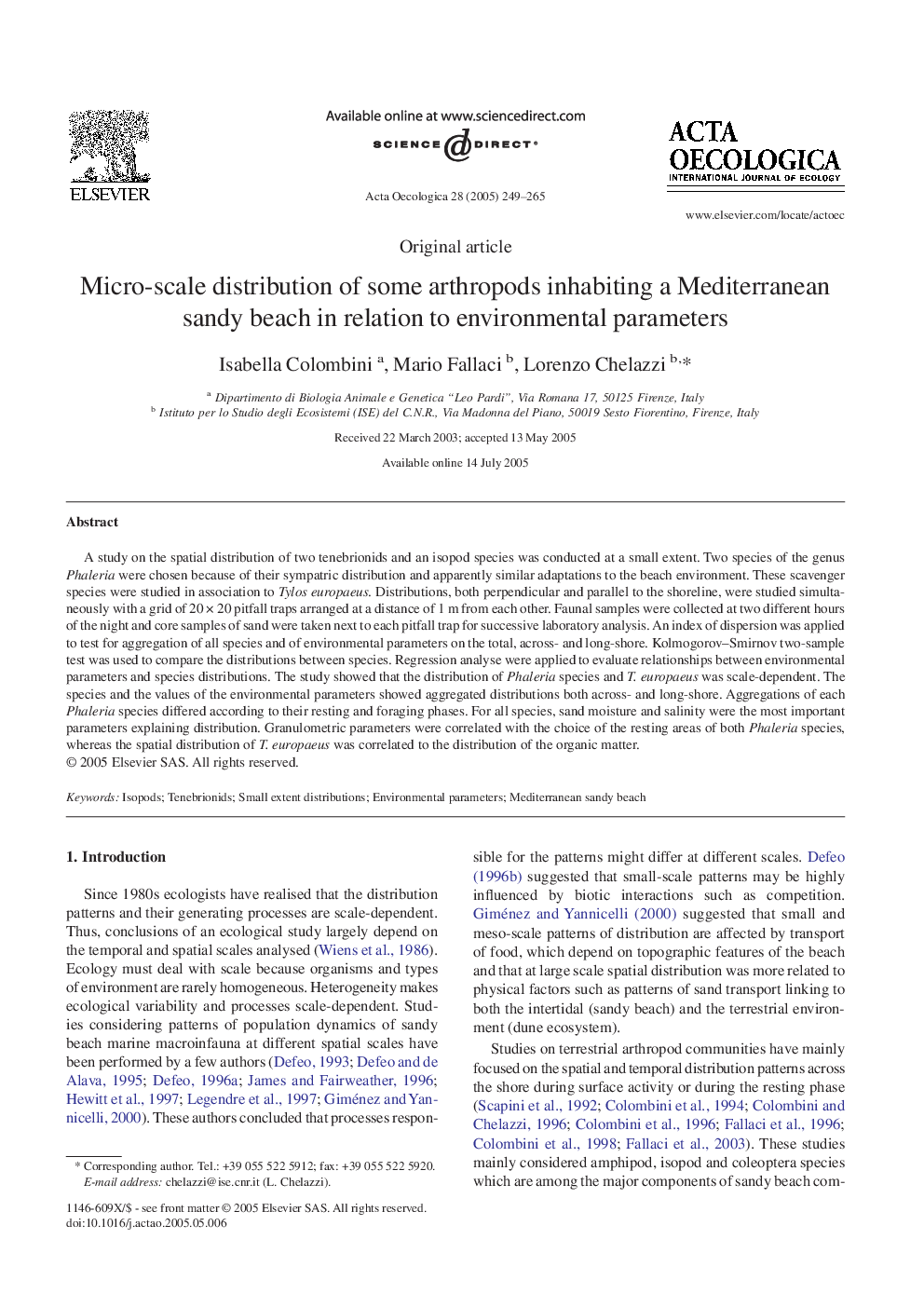| Article ID | Journal | Published Year | Pages | File Type |
|---|---|---|---|---|
| 9444963 | Acta Oecologica | 2005 | 17 Pages |
Abstract
A study on the spatial distribution of two tenebrionids and an isopod species was conducted at a small extent. Two species of the genus Phaleria were chosen because of their sympatric distribution and apparently similar adaptations to the beach environment. These scavenger species were studied in association to Tylos europaeus. Distributions, both perpendicular and parallel to the shoreline, were studied simultaneously with a grid of 20 Ã 20 pitfall traps arranged at a distance of 1Â m from each other. Faunal samples were collected at two different hours of the night and core samples of sand were taken next to each pitfall trap for successive laboratory analysis. An index of dispersion was applied to test for aggregation of all species and of environmental parameters on the total, across- and long-shore. Kolmogorov-Smirnov two-sample test was used to compare the distributions between species. Regression analyse were applied to evaluate relationships between environmental parameters and species distributions. The study showed that the distribution of Phaleria species and T. europaeus was scale-dependent. The species and the values of the environmental parameters showed aggregated distributions both across- and long-shore. Aggregations of each Phaleria species differed according to their resting and foraging phases. For all species, sand moisture and salinity were the most important parameters explaining distribution. Granulometric parameters were correlated with the choice of the resting areas of both Phaleria species, whereas the spatial distribution of T. europaeus was correlated to the distribution of the organic matter.
Related Topics
Life Sciences
Agricultural and Biological Sciences
Ecology, Evolution, Behavior and Systematics
Authors
Isabella Colombini, Mario Fallaci, Lorenzo Chelazzi,
